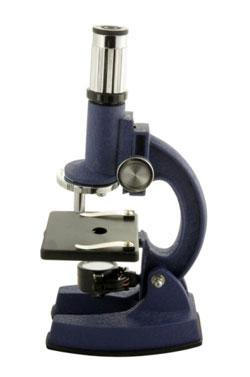 For a couple quarters there, it looked as if SAP had its competitive differentiator in the Big Data arena: in-memory technology. SAP’s HANA in-memory technology, which it claims will drastically speed up data analytics, has evolved into an integral part of the company’s product portfolio, baked into everything from its CRM software to its Business Suite ERP offering. Earlier this year, SAP indicated that it would even expand its HANA-enhanced business software beyond its traditional enterprise audience, targeting small- to midsize businesses with a need to store and analyze massive amounts of data. It’s a truism of corporate life that no company will allow a rival an unencumbered playing field for very long. Indeed, other IT vendors have moved into the in-memory space with the full intention of profiting however they can. Earlier in April, IBM announced a new platform called BLU Acceleration, which it claimed would boost the in-memory performance of datasets; the software can apparently analyze data in parallel across different processors. If that wasn’t enough to make SAP a bit nervous, Oracle has used this year’s Collaborate ’13 to whip the curtain back from its new Oracle In-Memory Applications for Oracle Engineered Systems, which it claims (perhaps with a bit of that infamous Oracle braggadocio) will leverage DRAM, flash memory and the InfinitiBand network fabric to run processes much faster than other commodity hardware. By speeding up Oracle applications on Oracle hardware, of course, the company can continue to sell its integrated hardware-software stacks as a necessary component for any enterprise; and that could be an issue for SAP, which is dedicated to peeling away as many Oracle customers as possible. If that wasn’t enough, Microsoft is prepping a Big Data project known as “Hekaton,” which will layer in-memory technology into the company’s next major SQL Server release. “In-memory computing is a core element of Microsoft’s strategy to deliver a data platform that enables customers to analyze all types of data while also accelerating time to insight,” Ted Kummert, corporate vice president of Microsoft’s Business Platform Division, wrote in a November 2012 blog posting. “Our approach to in-memory computing is to provide a complete portfolio for all application patterns, built into our existing products that enable rapid insights on any data, structured or unstructured.” SAP still depends on HANA and in-memory technology as a selling point for its customers. But if these other competitors continue to expand their presence in the in-memory market, it could blunt any SAP claims of uniqueness. Image: mama_mia/Shutterstock.com
For a couple quarters there, it looked as if SAP had its competitive differentiator in the Big Data arena: in-memory technology. SAP’s HANA in-memory technology, which it claims will drastically speed up data analytics, has evolved into an integral part of the company’s product portfolio, baked into everything from its CRM software to its Business Suite ERP offering. Earlier this year, SAP indicated that it would even expand its HANA-enhanced business software beyond its traditional enterprise audience, targeting small- to midsize businesses with a need to store and analyze massive amounts of data. It’s a truism of corporate life that no company will allow a rival an unencumbered playing field for very long. Indeed, other IT vendors have moved into the in-memory space with the full intention of profiting however they can. Earlier in April, IBM announced a new platform called BLU Acceleration, which it claimed would boost the in-memory performance of datasets; the software can apparently analyze data in parallel across different processors. If that wasn’t enough to make SAP a bit nervous, Oracle has used this year’s Collaborate ’13 to whip the curtain back from its new Oracle In-Memory Applications for Oracle Engineered Systems, which it claims (perhaps with a bit of that infamous Oracle braggadocio) will leverage DRAM, flash memory and the InfinitiBand network fabric to run processes much faster than other commodity hardware. By speeding up Oracle applications on Oracle hardware, of course, the company can continue to sell its integrated hardware-software stacks as a necessary component for any enterprise; and that could be an issue for SAP, which is dedicated to peeling away as many Oracle customers as possible. If that wasn’t enough, Microsoft is prepping a Big Data project known as “Hekaton,” which will layer in-memory technology into the company’s next major SQL Server release. “In-memory computing is a core element of Microsoft’s strategy to deliver a data platform that enables customers to analyze all types of data while also accelerating time to insight,” Ted Kummert, corporate vice president of Microsoft’s Business Platform Division, wrote in a November 2012 blog posting. “Our approach to in-memory computing is to provide a complete portfolio for all application patterns, built into our existing products that enable rapid insights on any data, structured or unstructured.” SAP still depends on HANA and in-memory technology as a selling point for its customers. But if these other competitors continue to expand their presence in the in-memory market, it could blunt any SAP claims of uniqueness. Image: mama_mia/Shutterstock.com The Coming In-Memory Technology Battle
 For a couple quarters there, it looked as if SAP had its competitive differentiator in the Big Data arena: in-memory technology. SAP’s HANA in-memory technology, which it claims will drastically speed up data analytics, has evolved into an integral part of the company’s product portfolio, baked into everything from its CRM software to its Business Suite ERP offering. Earlier this year, SAP indicated that it would even expand its HANA-enhanced business software beyond its traditional enterprise audience, targeting small- to midsize businesses with a need to store and analyze massive amounts of data. It’s a truism of corporate life that no company will allow a rival an unencumbered playing field for very long. Indeed, other IT vendors have moved into the in-memory space with the full intention of profiting however they can. Earlier in April, IBM announced a new platform called BLU Acceleration, which it claimed would boost the in-memory performance of datasets; the software can apparently analyze data in parallel across different processors. If that wasn’t enough to make SAP a bit nervous, Oracle has used this year’s Collaborate ’13 to whip the curtain back from its new Oracle In-Memory Applications for Oracle Engineered Systems, which it claims (perhaps with a bit of that infamous Oracle braggadocio) will leverage DRAM, flash memory and the InfinitiBand network fabric to run processes much faster than other commodity hardware. By speeding up Oracle applications on Oracle hardware, of course, the company can continue to sell its integrated hardware-software stacks as a necessary component for any enterprise; and that could be an issue for SAP, which is dedicated to peeling away as many Oracle customers as possible. If that wasn’t enough, Microsoft is prepping a Big Data project known as “Hekaton,” which will layer in-memory technology into the company’s next major SQL Server release. “In-memory computing is a core element of Microsoft’s strategy to deliver a data platform that enables customers to analyze all types of data while also accelerating time to insight,” Ted Kummert, corporate vice president of Microsoft’s Business Platform Division, wrote in a November 2012 blog posting. “Our approach to in-memory computing is to provide a complete portfolio for all application patterns, built into our existing products that enable rapid insights on any data, structured or unstructured.” SAP still depends on HANA and in-memory technology as a selling point for its customers. But if these other competitors continue to expand their presence in the in-memory market, it could blunt any SAP claims of uniqueness. Image: mama_mia/Shutterstock.com
For a couple quarters there, it looked as if SAP had its competitive differentiator in the Big Data arena: in-memory technology. SAP’s HANA in-memory technology, which it claims will drastically speed up data analytics, has evolved into an integral part of the company’s product portfolio, baked into everything from its CRM software to its Business Suite ERP offering. Earlier this year, SAP indicated that it would even expand its HANA-enhanced business software beyond its traditional enterprise audience, targeting small- to midsize businesses with a need to store and analyze massive amounts of data. It’s a truism of corporate life that no company will allow a rival an unencumbered playing field for very long. Indeed, other IT vendors have moved into the in-memory space with the full intention of profiting however they can. Earlier in April, IBM announced a new platform called BLU Acceleration, which it claimed would boost the in-memory performance of datasets; the software can apparently analyze data in parallel across different processors. If that wasn’t enough to make SAP a bit nervous, Oracle has used this year’s Collaborate ’13 to whip the curtain back from its new Oracle In-Memory Applications for Oracle Engineered Systems, which it claims (perhaps with a bit of that infamous Oracle braggadocio) will leverage DRAM, flash memory and the InfinitiBand network fabric to run processes much faster than other commodity hardware. By speeding up Oracle applications on Oracle hardware, of course, the company can continue to sell its integrated hardware-software stacks as a necessary component for any enterprise; and that could be an issue for SAP, which is dedicated to peeling away as many Oracle customers as possible. If that wasn’t enough, Microsoft is prepping a Big Data project known as “Hekaton,” which will layer in-memory technology into the company’s next major SQL Server release. “In-memory computing is a core element of Microsoft’s strategy to deliver a data platform that enables customers to analyze all types of data while also accelerating time to insight,” Ted Kummert, corporate vice president of Microsoft’s Business Platform Division, wrote in a November 2012 blog posting. “Our approach to in-memory computing is to provide a complete portfolio for all application patterns, built into our existing products that enable rapid insights on any data, structured or unstructured.” SAP still depends on HANA and in-memory technology as a selling point for its customers. But if these other competitors continue to expand their presence in the in-memory market, it could blunt any SAP claims of uniqueness. Image: mama_mia/Shutterstock.com 